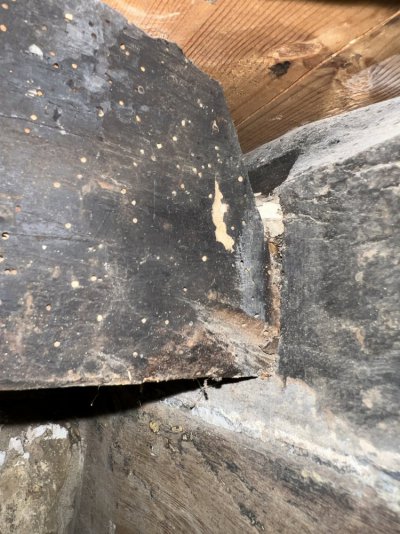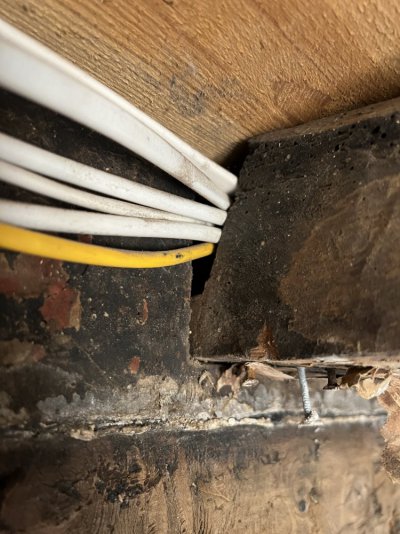Hi,
I’m a newbie here and I’d be very grateful for some advice as I need to replace joists that hold up the upstairs floor in my rubble stone cottage. I found a previous discussion that I found very useful here
Unlike Minkeycat, my common joists don’t just drop in to a protruding beam on the outside wall - in my cottage, they sit in a hole in the stonework itself on the outside wall. At the other end, they sit in a pocket in the bridging joist (thanks for the terminology, MikeG) with something I believe is called a bare-faced tenon and diminishing haunch.
My question is how physically does the replacement common joist get into position, given that it is longer than the distance between the outside wall and bridging joist, and can’t just be dropped in from above? Is it pushed further into to the bridging joist at an angle, which would allow it to be moved to a horizontal position, and then withdrawn out a few centimetres from the bridging joist whereby the other end would then (hopefully) slot into the stonework in the outside wall? I think this must be the case as the “pocket” in the bridging joist seems to be deeper than the tenon itself which would allow for this method.

I’m a newbie here and I’d be very grateful for some advice as I need to replace joists that hold up the upstairs floor in my rubble stone cottage. I found a previous discussion that I found very useful here
Unlike Minkeycat, my common joists don’t just drop in to a protruding beam on the outside wall - in my cottage, they sit in a hole in the stonework itself on the outside wall. At the other end, they sit in a pocket in the bridging joist (thanks for the terminology, MikeG) with something I believe is called a bare-faced tenon and diminishing haunch.
My question is how physically does the replacement common joist get into position, given that it is longer than the distance between the outside wall and bridging joist, and can’t just be dropped in from above? Is it pushed further into to the bridging joist at an angle, which would allow it to be moved to a horizontal position, and then withdrawn out a few centimetres from the bridging joist whereby the other end would then (hopefully) slot into the stonework in the outside wall? I think this must be the case as the “pocket” in the bridging joist seems to be deeper than the tenon itself which would allow for this method.


